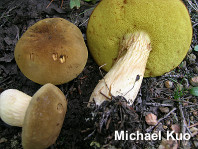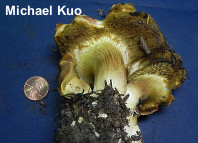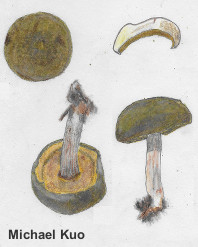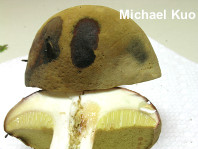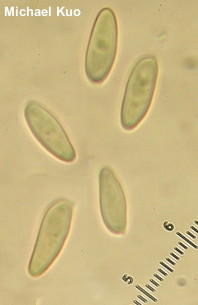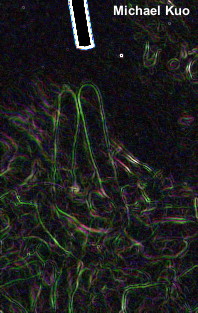| Major Groups > Boletes > Xerocomus ferrugineus |

|
Xerocomus ferrugineus [ Basidiomycota > Boletales > Boletaceae > Xerocomus . . . ] by Michael Kuo Also known as Boletus or Xerocomus spadiceus, Xerocomus ferrugineus is a species in the Xerocomus subtomentosus group. It features a distinctively ribbed stem and a cap that is finely velvety, at least when young. Xerocomus ferrugineus is best separated from the others in the group on the basis of its non-bluing flesh, its yellow basal mycelium, its association with conifers, and the green reaction of its cap to ammonia. It is unclear whether North American and European versions of Xerocomus ferrugineus are actually the same; the subtomentosus species group is in serious need of contemporary study and revision. Description: Ecology: Mycorrhizal with spruces and other conifers--but also occasionally reported under hardwoods (especially those occurring in mixed conifer-hardwood forests) and shrubs; growing alone, scattered, or gregariously; summer and fall; widely distributed in northern and montane North America; widely distributed in Europe. The illustrated and described collections are from Colorado and Finland. Cap: 4–9 cm; convex, becoming broadly convex; dry; finely velvety; usually olive brown to reddish brown or yellowish brown, but occasionally entirely olive or nearly green. Pore Surface: Yellow, becoming olive yellow with maturity; not bruising, or bruising slowly bluish; pores xerocomoid, 1-2 mm wide; tubes to 10 mm deep. Stem: 3–7 cm long; 1–2 cm thick; equal to slightly club-shaped, with a pinched off base; dry; solid and tough; widely and coarsely ribbed, over the apex or overall; whitish to yellowish or yellow; basal mycelium yellow. Flesh: Whitish to pale yellowish; not staining when sliced, or turning pinkish in the cap. Odor and Taste: Not distinctive. Chemical Reactions: Ammonia flashing blue-green on cap, then resolving to reddish brown; negative on flesh. KOH dark red to black on cap; orangish on flesh. Iron salts negative to gray on cap; negative on flesh. Spore Print: Olive to olive brown. Microscopic Features: Spores 10–13 x 3–4.5 µm; fusiform; smooth; yellowish in KOH. Hymenial cystidia 35–50 x 5–7.5 µm; lageniform; thin-walled; smooth; hyaline in KOH; inconspicuous. Pileipellis a collapsing trichoderm; yellow in KOH; elements 5–7.5 µm wide, smooth; terminal cells cylindric with rounded apices. REFERENCES: (Schaeffer, 1774) Alessio, 1985. (Fries, 1838; Saccardo, 1888; Smith, Smith & Weber, 1981; Phillips, 1991/2005; Both, 1993; Bessette, Roody & Bessette, 2000.) Herb. Kuo 08100701. Herb DBG ROMO2012 5025-09, 5025-22. This site contains no information about the edibility or toxicity of mushrooms. |
© MushroomExpert.Com |
|
Cite this page as: Kuo, M. (2016, August). Xerocomus ferrugineus. Retrieved from the MushroomExpert.Com Web site: http://www.mushroomexpert.com/xerocomus_ferrugineus.html |
